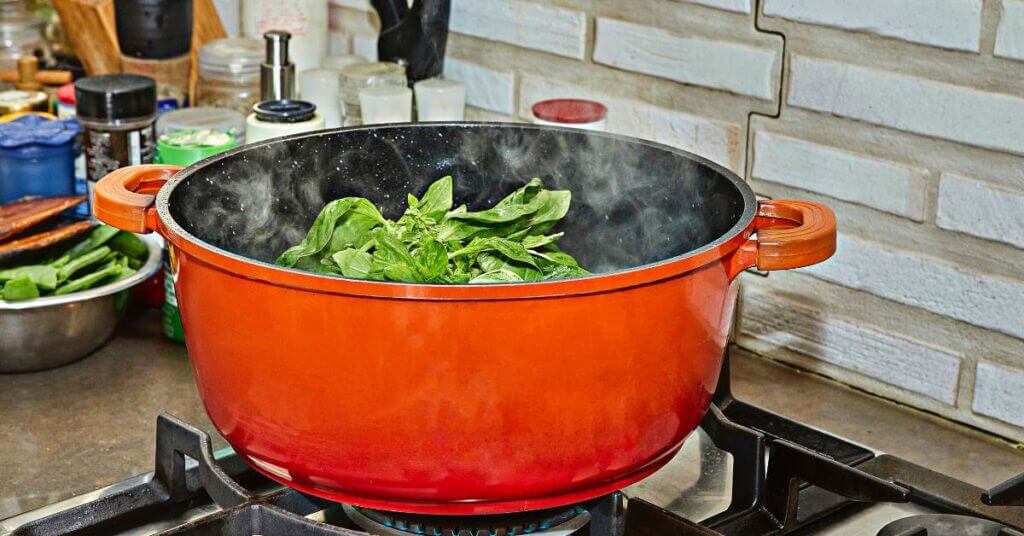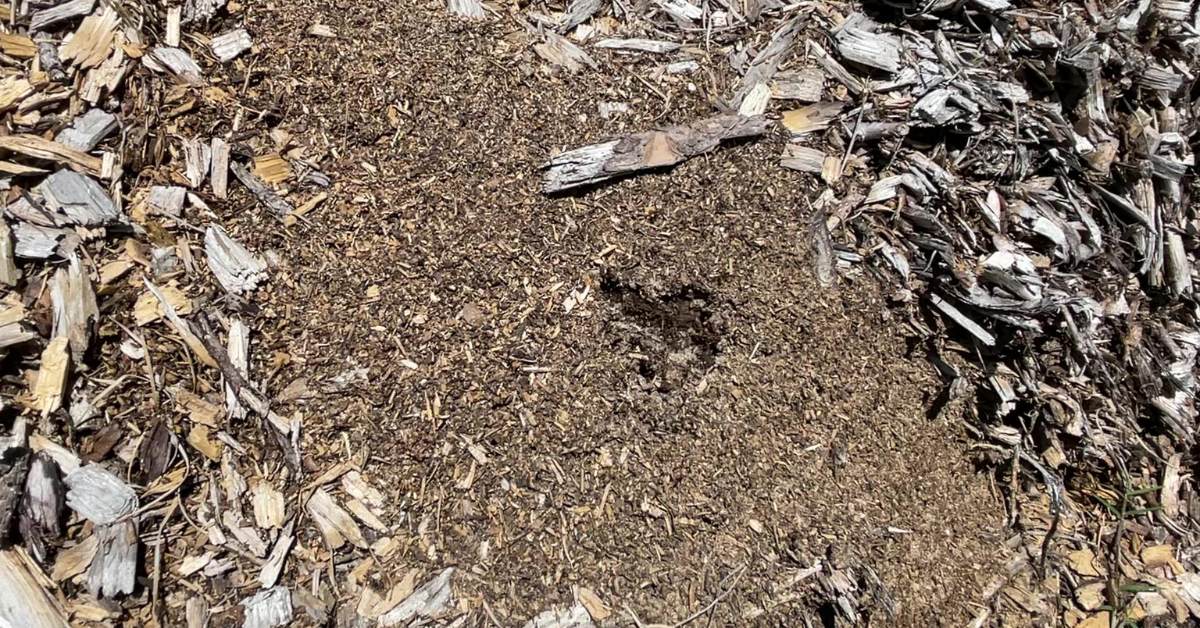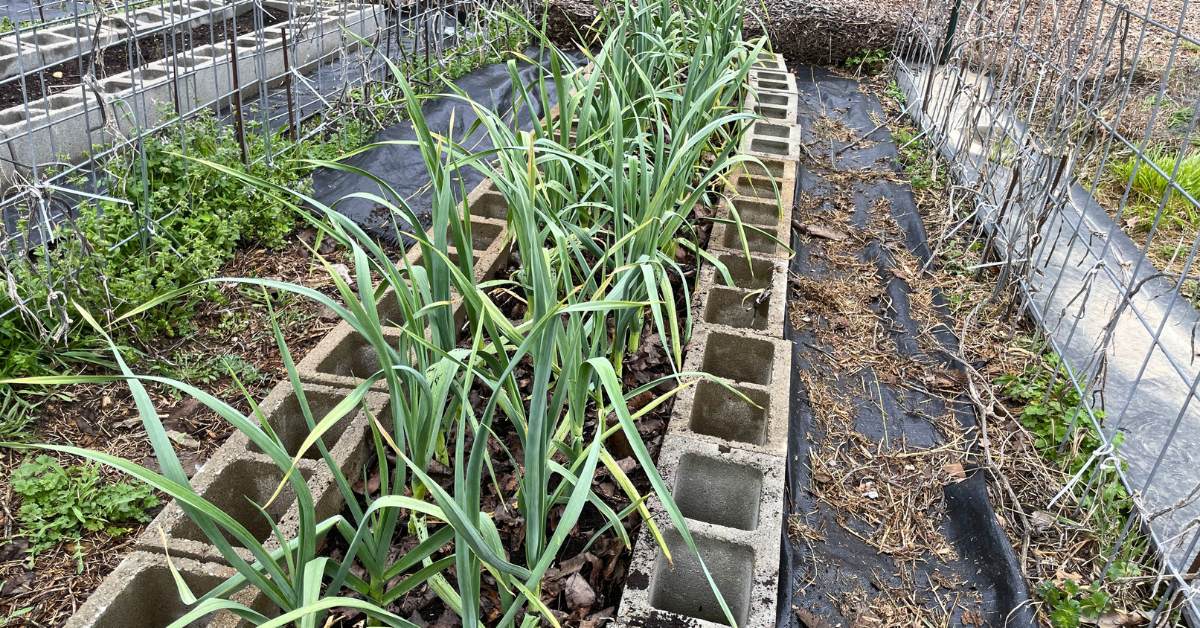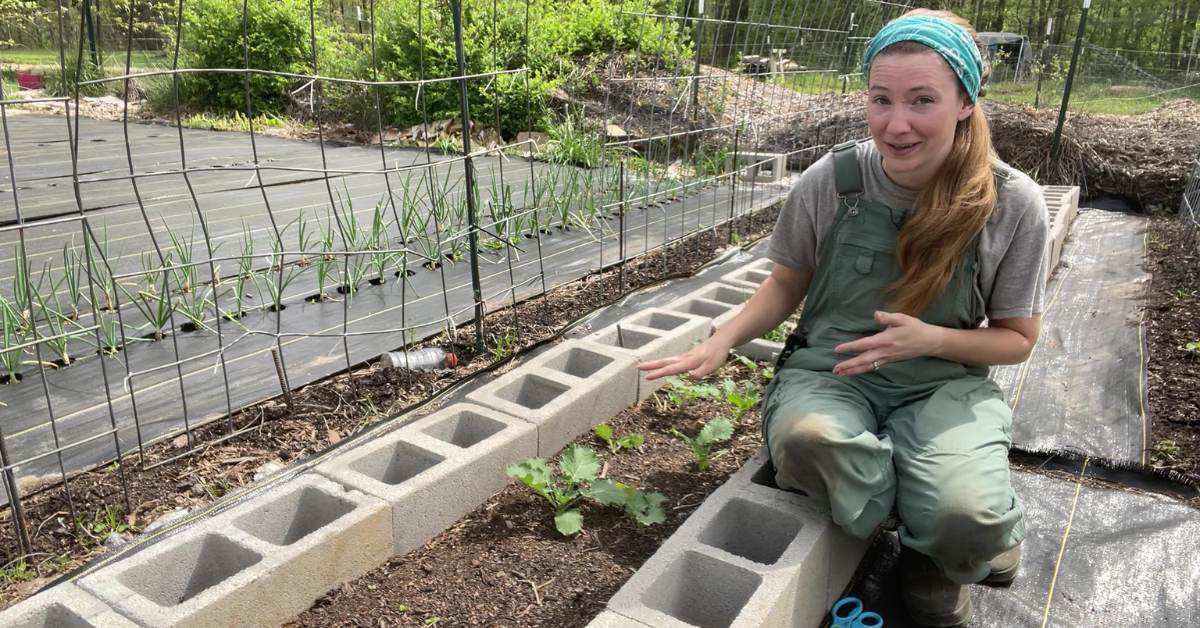Did you know the secret to vibrant green pesto is blanching?
Yes! It’s easy to do, too.
Here’s how.
Understanding Blanching and Its Relevance
Blanching is a culinary skill that can enhance the color, flavor, and texture of various ingredients. It involves briefly immersing an ingredient in boiling water, followed by a quick dip in ice-cold water to halt the cooking process.
When it comes to basil and pesto, blanching plays an essential role in retaining the vibrant green color and creating a smooth sauce.
One reason blanching is helpful for pesto is that it deactivates decomposing enzymes. These enzymes can cause basil leaves to turn brown and alter the overall appearance of the sauce.
By blanching the basil, you’re preventing the enzymes from browning the leaves, ensuring a visually appealing pesto.
Remember, blanching is not just for looks, but it also has a role in the sauce’s texture. Cooked basil emulsifies more easily, resulting in a smoother, creamier pesto.
This step can be particularly beneficial if you want your pesto to have a velvety, rich texture.
How to Blanch Basil
Preparation
Gather fresh basil leaves and ensure they are clean. Fill a large pot with water and add a pinch of salt and baking soda to it.
Bring the water to a rolling boil. While you’re waiting for the water to boil, prepare a bowl of ice water by filling it with ice cubes and cold water. Make sure you have a strainer or a slotted spoon ready as well.
Blanching
Once the water is boiling, place the basil leaves in the sieve and submerge them into the boiling water. Gently stir and press the leaves, making sure that they blanch evenly.
Keep the basil leaves in the boiling water for about 15-30 seconds.
This brief exposure to the heat will help preserve the vibrant green color of the basil while also removing any possible bitterness.
Cooling and Drying
After blanching the basil leaves, immediately transfer them into the prepared bowl of ice water using the strainer or a slotted spoon. This will stop the cooking process and keep the basil’s bright green color.
Let the basil leaves sit in the ice water for a few seconds to cool down completely.
Remove the basil leaves from the ice water and gently squeeze out any excess water. You can also use paper towels or a clean kitchen towel to pat the leaves dry.
Make sure the basil leaves are thoroughly dried to avoid diluting your pesto. Once your basil is dried and cooled, you’re ready to proceed with making your delicious, homemade pesto.
Blanching vs. Non-Blanching Basil for Pesto
When making pesto, you might wonder if blanching is really worth it. Let’s compare the two methods and see how each affects the flavor, texture, and appearance of your pesto.
We’ve already mentioned that blanching helps preserve the vibrant green color of the basil, as it slows down the oxidation that turns the pesto brown.
The texture of your pesto will also be a bit smoother and creamier, as blanched basil emulsifies more easily.
In terms of flavor, blanching basil may slightly reduce its potency, but since basil is inherently fragrant, the reduction is minimal.
On the other hand, using non-blanched basil for your pesto allows the leaves to retain their natural, robust flavor. However, the pesto oxidizes quickly and develops a brown color if not consumed quickly.
The texture may vary as well, since unblanched basil may not emulsify as easily and might result in a slightly chunkier pesto.
In summary, both methods have their merits. If you prioritize a vibrant green color and smoother texture, blanching your basil is the way to go.
If you prefer to preserve the full intensity of the basil flavor and don’t mind the browning, then using non-blanching basil is the way to go.
Ultimately, it’s up to your personal preference when crafting your perfect basil pesto recipe!
Tips for Storing Pesto
Storing your homemade pesto properly is essential to maintain its vibrant green color, texture, and freshness.
Here’s how I store pesto:
Unfortunately, pesto can’t be safely canned, but here are some other storage methods:
-
Refrigerator: To store pesto in the refrigerator, place it in an airtight container, and cover the surface with a layer of plastic wrap. This will help prevent oxidation, which can cause the pesto to lose its vibrant green color. Your pesto can last in the refrigerator for up to one week.
-
Freezer: If you have made a large batch of pesto or would like to store it for an extended period, the freezer is your best option. Store the pesto in small, airtight containers, or use an ice cube tray to portion into individual servings. Cover with plastic wrap and then transfer the frozen cubes to a freezer-safe bag.
The key to maintaining that beautiful, vibrant green color and fresh taste of your homemade pesto is blanching it first, then storing it properly. We hope this post and video help you make the best pesto yet!
FREE FOOD STORAGE PLAN!

Does gathering and storing a year’s worth of food for your family seem overwhelming and unachievable?
Make it easy with our step-by-step plan. Subscribe to our weekly newsletter & we’ll send it to you FREE!










